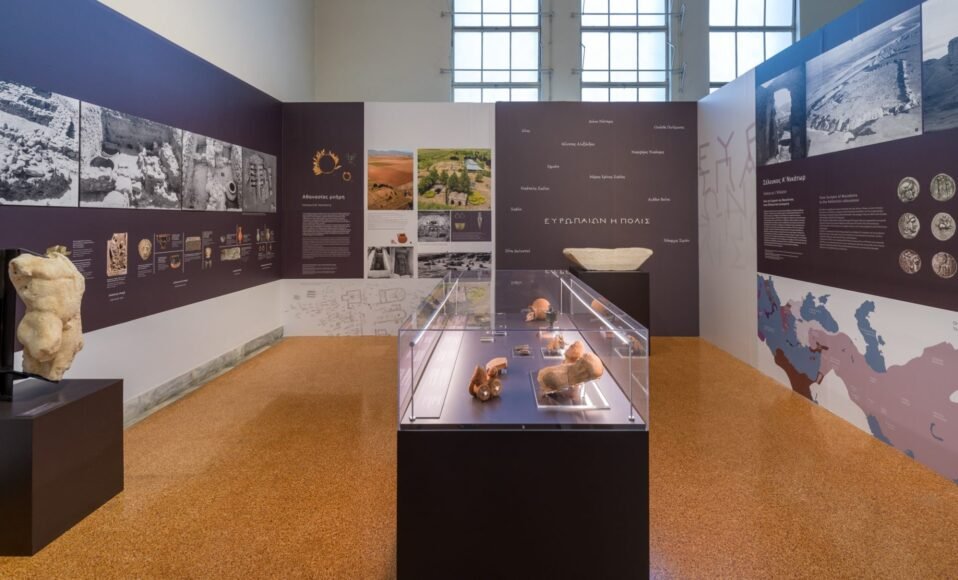
Many are familiar with the myth of Europe, where the young princess was abducted by Zeus from ancient Phoenicia and brought to the continent that bears her name. However, few may know that in ancient Macedonia, there existed a city called Europus, located within today’s Kilkis Regional Unit, which can be considered one of the most European cities of antiquity.
“Europus was a significant city in ancient Bottiaea, situated just 18 km away from the Macedonian kingdom’s capital, Pella. An inscription dating back to the late 2nd century BC refers to it as the ‘City of Europeans’ on an honorary pedestal dedicated to proconsul Marcus Minucius Rufus. This Roman official is notable for assisting the province of Macedonia, particularly Europus, in resisting invasions from Gallic and other tribes,” explains Georgia Stratouli, head of the Ephorate of Antiquities of Kilkis, in an interview with the Athens-Macedonian News Agency (ANA-MPA).
Currently ongoing until Sunday, March 16, 2025 (with a possibility for extension), an exhibition highlights antique treasures from Europus at the National Archaeological Museum (NAM). This initiative is part of NAM’s “Museum Meetings at the National” series, marking the second such event—following the presentation of the lead oracles from Dodona. This exhibition showcases artifacts from ancient Europus, once a thriving center in the Macedonian kingdom, known for its distinguished citizens who were active at Pan-Hellenic sanctuaries and a notable identity linked to contemporary society. It is also the birthplace of Seleucus I, a significant figure among Alexander the Great’s successors, and is being presented for the first time in Athens.
So, what do we know about this city with such a distinctive name? “Mythology connects Europus to the eponymous hero of the Macedonians, Europus, who was the son of Macedon and Orithyia, daughter of Cecrops. The name Europus etymologically means ‘broad,’ likely referencing the geography of the region, which includes the wide and navigable Axios River and the forested Paiko mountains. The connection between the city’s name and our continent is quite evident,” clarifies Stratouli, who notes that the city now holds two prominent identifiers: Europus and Seleucus I Nicator, founder of the Seleucid dynasty and a central figure in the Hellenistic World.
According to Thucydides, the city was heavily fortified during classical times, successfully fending off an assault by Thracian king Sitalkes in 429 BC. As a prosperous city, Europus thrived during the Hellenistic period and continued to flourish into the 2nd and 1st centuries BC despite facing various invasions, largely due to its strategic position along the valley of the once-navigable Axios River, which led into the Thermaic Gulf. Artifacts from the exhibition, including grave monuments crafted from Attic marble dating back to the 4th century BC, suggest that these were imported goods, indicating a significant trade network. “Transporting heavy marble from Attica to the north would have been exceedingly difficult without the river and sea routes,” Stratouli adds, emphasizing the city’s historical importance near the once-prosperous port of Pella.
“The wealth of burial artifacts from Europus, excavated in the 1990s by archaeologist Thomi Savvopoulou, along with the Hellenistic tomb discovered in 2020-2021 under the direction of Stratouli, point to a select few citizens of ancient Europus enjoying economic prosperity. This connects them to those referred to in sanctuaries in Larissa and Peloponnesian Argos during the 4th and 3rd centuries BC, including notable individuals like Machatas from Europus, who is mentioned among the theorodokes of the Delphi Oracle,” she elaborates.
From Europus also emerged Seleucus I Nicator, a founder of the Seleucid dynasty and a key figure in the Hellenistic period, recognized by historian Arrian as one of Alexander the Great’s most important successors. Seleucus established several cities, including Dura-Europos on the Euphrates, resembling his homeland,” Stratouli notes, highlighting the significance of the NAM exhibition, which features artifacts from the Archaeological Museum of Kilkis as well as two short films produced by the Ephorate of Antiquities of Kilkis. One film focuses on Seleucus’s historical journey, titled “Seleucus I Nicator. From













Leave a Reply